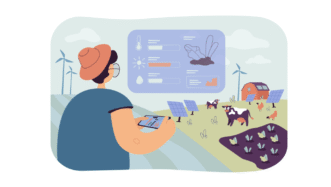LESSON OVERVIEW
What’s the difference between a trend and a fad? How do they affect business? Should companies ignore fads or try to exploit them? This and more in this Business English lesson.
This lesson plan focuses on listening comprehension and speaking skills. You will have a chance to watch a short video about trends and fads and discuss with students what they think a fad is now and what could be a trend. Apart from the listening comprehension tasks, you will show your students some vocabulary for predicting and expressing likelihood which will help them talk about trends. This worksheet was prepared for Business English students, especially those who work in the e-commerce and digital advertising businesses. If your students are not into the online world, you might need to change the last exercise and add some other examples of trends and fads.
C1 / Advanced60 minStandard LessonPremium Plan
WARM-UP
The lesson starts with a warm-up activity on what trends and fads are. Let your students discover the difference between those 2 phenomena by matching them to their features. Afterwards, you might want to ask your students to create a short dictionary definition of both a trend and a fad. This will help them better understand these 2 concepts.
VIDEO (LISTENING COMPREHENSION)
This segment of the lesson consists of 2 listening comprehension tasks: one focused on listening for the main idea and the other on listening for specific vocabulary. Before you start watching the video, your students will first try to answer the questions so that they can predict what the video might be about. Next, they watch the video and compare their answers to what the speaker in the video says. Then, students watch the video again, but this time they need to listen for specific words to fill in the gaps. This task is divided into 2 parts not to overwhelm your students.
DISCUSSION (EXPRESSING LIKELIHOOD)
The last part of the lesson focuses on talking about trends and fads from a business perspective. First, your students get a list of phrases that can be used for expressing likelihood. Go through those expressions with your students and let them decide what level of certainty each of them expresses. It’s also a good opportunity to elicit from your students other ways of expressing likelihood (e.g. modal verbs). Finally, the last task is all about using new language in speech and critically assessing different trends and fads.
WORKSHEETS
Subscribe to unlock these and many other Standalone lesson with the Premium plan
Subscribe














This lesson plan was a total success. It has a great balance of controlled and non-controlled practice. My students learned a lot and it led to a very interesting discussion where everyone had something to say and it gave me lots of opportunities to address mistakes in their speech as they spoke freely.
Great to hear that!
One of the best classes ever. <3 Thank you!
Awww, thanks a lot 🙂
This lesson plan is what i really needed for my lesson in Trends and Networks.
That’s great to hear! Enjoy teaching this lesson 🙂
this is one of the best worksheets on this website
Nice to hear that, Andrew! It’s one of the classic ESL Brains lessons published years ago. We might need to update it with some more up-to-date trends and fads.
Yes, it did spoil the last exercise a little bit but nonetheless it was a great worksheet.
It’s a great idea for a lesson . Unfortunatelly I don’t quite understand how to use the last part of it aka speaking. The examples of use of the likelihood expressions are a but confusing.
This is a good lesson, it would be good to update with more recent trends/fads for 2025
Hi! We’ve just updated the list of trends/fads in the last exercise. Hope that helps!